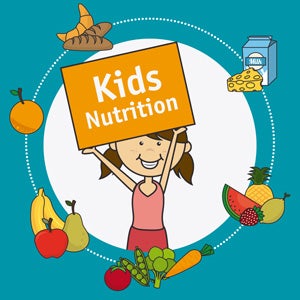BRAIN FOOD FOR KIDS – TIPS FOR IMPROVING YOUR CHILD’S LEARNING THROUGH DIET
Tips for improving your child’s learning through diet
In his early years your child will go through periods of fast learning and development. It is very important that you support him/her in their learning journey by providing the right nutrition that supports optimal brain function. Good nutrition is one of the best ways you can improve your child’s attention span so that he can learn throughout the day. By giving your child’s brain the nutrients it needs for optimal brain functioning, you can be assured that your child’s ability to focus and concentrate will be at the optimal level for learning.
By applying these three simple tips you can help improve your child’s attention span and thereby improve his academic performance.
TIP 1: Provide a balanced breakfast

Skipping breakfast first thing in the morning sets your child up for poor brain function, bad mood and increased risk of hyperactivity throughout the day. Breakfast should include all 3 the main food groups namely protein, carbohydrate and fat. A high carbohydrate breakfast (e.g sugary refined cereal only) increases blood sugar levels fast for a short period, whereafter it falls very low again. These high and lows of blood sugar can make her feel groggy later in the day. She will also have less energy for concentrating as large amounts of sugar in the blood actually blocks the cells of the brain that are responsible for wakefulness and memory. On the other hand , providing a high quality protein breakfast (which includes a toddler cereal or other wholegrain porridges like oats and/or toddler milks (which are fortified with essential fatty acids and vitamins and minerals), a serving of yoghurt or an egg) is one the easiest ways you can ensure good concentration throughout the day as it actually primes the chemicals that is responsible for optimal brain functioning.
TIP 2: Provide a good quantity and quality of protein in your child’s diet
The amino acids that are found in good quality proteins provide the necessary building blocks for the messengers your child’s brain needs to ensure easy learning by ensuring that your child stays attentive and energised throughout the day. By ensuring your child has good quality proteins that are included in a balanced diet (which includes fats and carbohydrates) you can train your child’s brain to set its messengers for optimal function. This, in turn, will in turn allow for better cognition and learning. So try and include a toddler milk in your child’s lunchbox to provide proteins to help maintain his concentration throughout the day.
TIP 3: Keep the 3 C’s of protein in mind when choosing proteins for your child’s diet
Count: because the right quantity of protein is key – not too much or too little
Too much of anything is not healthy, even if it is a building block of life. Neither is too little.
The right amount of protein is important when a child is growing. Too much protein can lead to an increase in the amount of metabolic products which increases the amount of body fat cells and the risk for diabetes and heart disease later in life. Too little protein negatively affects early growth and increases the risk of disease in childhood and adult life.
Calibre: Because the right quality protein is essential.
Protein provides the nutrients for muscles, organs, skin, hair and nails to grow – just like quality building materials provide a foundation for a house.
Good quality protein with the right types of building blocks helps your child grow at a steady rate and lessens the risk of bad quality building blocks which may increase the risk of diseases later in life. It supports healthy weight gain and helps reduce the risk of them becoming overweight later in life.
Context: Not just any protein will do, it must have the right size and shape.
The right size and shape of protein is especially important for the prevention and management of allergies. Certain proteins like cow’s milk protein are often the source of allergies. But milk remains a very important part of our diets throughout the life cycle. That is why certain processes are sometimes applied to cow’s milk protein to change the size and the shape of the protein to make it less recognisable to the body as an allergen (those proteins causing allergies). These highly adapted proteins have been shown to reduce the risk of allergies especially atopic dermatitis in people who are at risk of allergies as it trains the immune system not to react to certain food proteins.
Finally, remember that if your child learns quickly, it shows that he or she is getting enough nutrients for brain development. You are doing a good job mom!
